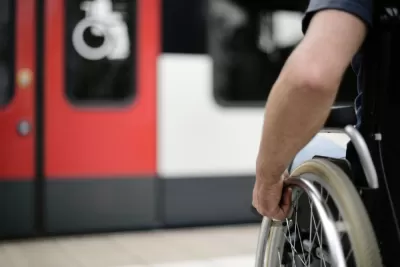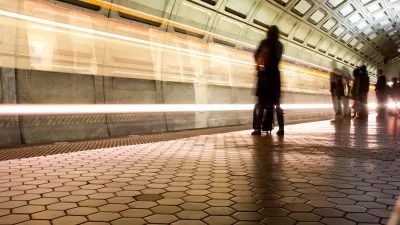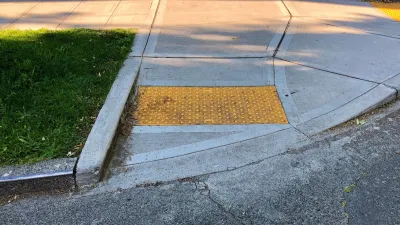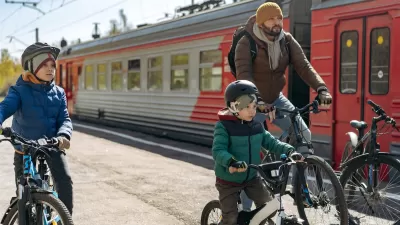Riders with disabilities say that vertical and horizontal gaps of as much as 7 inches between trains and platforms prevent many riders from safely entering and exiting trains.

A lawsuit filed by three disabled New York City transit riders calls on the Metropolitan Transportation Authority to close the gaps between platforms and trains that prevent many people using wheelchairs from safely accessing trains.
As Alissa Walker writes in Curbed, “The complaint argues that the MTA and the New York Transit Authority ‘have not formulated any kind of plan to address the gaps that prevent people with mobility and visual disabilities from using the subway,’ despite spending more than $100 billion on capital improvements to the system since 1982.”
While the agency has committed to installing elevators at more of its stations thanks to other recent lawsuits, repairing the vertical and horizontal gaps on platforms would make train travel safer for not just wheelchair users, but also people with visual impairments.
According to Walker, “Many transit agencies have what’s called universal-level boarding, where all train floors are completely flush with all platforms.” But “In New York, due to variables in rolling stock and station design, the MTA would have to standardize all its train platforms and train cars line by line in order to achieve this.”
The plaintiffs in the suit against MTA say that stair-free access isn’t enough to ensure universal accessibility. Other agencies are implementing temporary or permanent solutions such as retractable bridge plates, portable ramps, and universal platform doors.
FULL STORY: 7-Inch Platform Gaps Are Keeping Disabled Riders Off the Subways

Trump Administration Could Effectively End Housing Voucher Program
Federal officials are eyeing major cuts to the Section 8 program that helps millions of low-income households pay rent.

Planetizen Federal Action Tracker
A weekly monitor of how Trump’s orders and actions are impacting planners and planning in America.

Ken Jennings Launches Transit Web Series
The Jeopardy champ wants you to ride public transit.

Washington Legislature Passes Rent Increase Cap
A bill that caps rent increases at 7 percent plus inflation is headed to the governor’s desk.

From Planning to Action: How LA County Is Rethinking Climate Resilience
Chief Sustainability Officer Rita Kampalath outlines the County’s shift from planning to implementation in its climate resilience efforts, emphasizing cross-departmental coordination, updated recovery strategies, and the need for flexible funding.

New Mexico Aging Department Commits to Helping Seniors Age ‘In Place’ and ‘Autonomously’ in New Draft Plan
As New Mexico’s population of seniors continues to grow, the state’s aging department is proposing expanded initiatives to help seniors maintain their autonomy while also supporting family caregivers.
Urban Design for Planners 1: Software Tools
This six-course series explores essential urban design concepts using open source software and equips planners with the tools they need to participate fully in the urban design process.
Planning for Universal Design
Learn the tools for implementing Universal Design in planning regulations.
Heyer Gruel & Associates PA
Ada County Highway District
Institute for Housing and Urban Development Studies (IHS)
City of Grandview
Harvard GSD Executive Education
Toledo-Lucas County Plan Commissions
Salt Lake City
NYU Wagner Graduate School of Public Service





























